Époisses

The town of Époisses is a two hour drive from Lyon, a nice little day jaunt. You roll along country roads through thick green bucolic pasture land into Burgundy. As you enter the vicinity where this cheese is produced, you start to see herds of cows lazing majestically under trees and colonies of their reciprocal herons. We go there from time to time, basically a little town like so many you might stumble on in France, with flowers growing along main street, a local post office, and a cluster of buildings with a restaurant. You might possibly miss the sign that posts the hours that the public can visit the Berthaut fromagerie. Then again you might be on a cheese pilgrammage.
The story of this cheeses dates back to the 16th century, to the monastery which is now a private chateau, visible when the gates are open these days. Legend has it that the monks living there developed the original recipe for this cheese, and produced it solely for their own consumption. Near the end of the 18th century, when the monks left Époisses during the time when many church properties were being seized sold off in France, they left the recipe with some local townsfolk, who began producing it themselves. 30 years later, Époisses came in second, after Brie, in an international cheese competition, an event that put Époisses on the map and encouraged the proliferation of small cheese producers. The gastronome Brillat Savarin who was native to a town on the outskirts of Lyon named Époisses the king of cheeses in the beginning of the 19th century. A hundred years later, the Sydicat de defense de l’époisses estimates from public documents produced at that time that there were more than 300 small farm producers of this cheese in the valley of Époisses.
The First World War destroyed much of the local production of this cheese. Nearly all of the local menfolk were sent to the battlefield and there simply were not enough hands to continue with the cheese production. It fell to the wayside, and once the line was broken, it was difficult to resume production. With the development of other forms of agriculture and industry upon their return from the war, the production of this cheese waned to almost complete extinction during the years that followed. There is no record of cheese production at all during the years 1954 to 1956. In 1956, two farmers called upon the townspeople who carried a living memory of having produced this cheese at some time in their lives to help them. Through a collective work, these important holders of the story of their town’s rich cheesmaking past reconstructed the original recipe and two families began to produce Époisses again. Today there are four producers of this cheese, of which one is a small artisan farm operation.
 Since 1991, Époisses has been protected under AOC (Appellation d’Origine Contrôlée) rules. For the production of Époisses, the milk is limited to coming from three local breeds of cow, the Brune, Simmenthal, and Montéliearde. 85% of their diet must come from natural outdoor grazing in herds that include a mixture of both milking cows and young weaned cows not yet of age to produce milk. Of course the conditions of the grazing land are strictly controlled. All fertilization must be organic and the schedule following grazing is tightly controlled. In addition to natural pasture, in the seasons when their diet must be reinforced, Époisses cows are fed on a diet of 80% local dried herbs, and sweet things like washed beets cut daily for their consumption mixed with specified grains. According to AOC rules, because the flavor of the milk might be affected, the cows are prohibited from eating leeks, cabbage, colza (grown for its oil locally), celery roots, turnips, and beet greens.
Since 1991, Époisses has been protected under AOC (Appellation d’Origine Contrôlée) rules. For the production of Époisses, the milk is limited to coming from three local breeds of cow, the Brune, Simmenthal, and Montéliearde. 85% of their diet must come from natural outdoor grazing in herds that include a mixture of both milking cows and young weaned cows not yet of age to produce milk. Of course the conditions of the grazing land are strictly controlled. All fertilization must be organic and the schedule following grazing is tightly controlled. In addition to natural pasture, in the seasons when their diet must be reinforced, Époisses cows are fed on a diet of 80% local dried herbs, and sweet things like washed beets cut daily for their consumption mixed with specified grains. According to AOC rules, because the flavor of the milk might be affected, the cows are prohibited from eating leeks, cabbage, colza (grown for its oil locally), celery roots, turnips, and beet greens.The milk collected for the production of this cheese is put to use within 24 hours of the time it is collected from the cows. The producer is required to maintain separate channels for milk destined for Époisses cheese production and other milk products. There is absolutely no crossing of paths of the Époisses cheese milk and that destined for other milk products.
After heating the milk to a certain temperature (about body temperature for a cow), a special slow process of coagulation takes place lasting from 16 to 24 hours. After transferring the fragile curds by hand with the ladle method to specially made moulds, the producers then strain the curds, turning them twice before the addition of salt and the transfer of the cakes to the caves where they will be further turned and bathed for 4 weeks.
The cakes are bathed on a regular schedule before they go out into the world in a progressively stronger mix of water or brine and Marc de Bourgogne, according to the individual producer’s method, from one to three times a week, for four weeks. At the end, the bath consists of pure Marc. They keep strict records of every element of production, including a log of every time the cheeses are hand turned and bathed.
You might think that this cheese is colored artificially, from the bright orange patina. The color of the cheese comes solely from the delicate microclimate of bacteria and yeast on its surface which has been washed down over time with Marc and brine. The color progressively develops from white to a peachy gold, to the bright orange that we know when our fromager hands it to us.
Each batch is inspected and judged on a whole matrix of elements broken down into subcategories of visual aspect and flavor, by officials from the association for the protection of Époisses. If a tested cheese does not meet a minimum combined score for both appearance and flavor, the whole batch is rejected and the cheese cannot be sold under the name. Things that disqualify a cheese might be that it has developed spots, or has liquefied in such a way that an empty space has developed under the outer crust. A cheese that is missing a deep enough color is rejected. Too many holes, puffiness, excessive wrinkling, all disqualify an Époisses that is not up to snuff. Époisses that is good enough is supple, creamy and soft, and features a light core. It isn’t grainy, taste too salty or bitter, nor does it have an ammonia or sweet flavor. The flavor of an Époisses that meets standard will taste honest and fruity, with balanced milk flavors, and will be redolent of the pastoral goodness in the terroir that produced it.
Your local fromager takes the product from the producer, and ages it according to his or her training for another 5 to 8 weeks. When is the best time for Époisses? After some time here, you’ll realize that your local fromager might only offer Époisses at certain times of the year. It is at its best in the fall and winter months, starting in November and into December, because that is the cheese that comes from rich early autumn pastures. Early summer Epoisses is also very flavorful and interesting, coming from the first outdoor grazing of the spring. This cheese is a must at our Thanksgiving table and is perfect for consumption, right now.

Labels: Fall 07
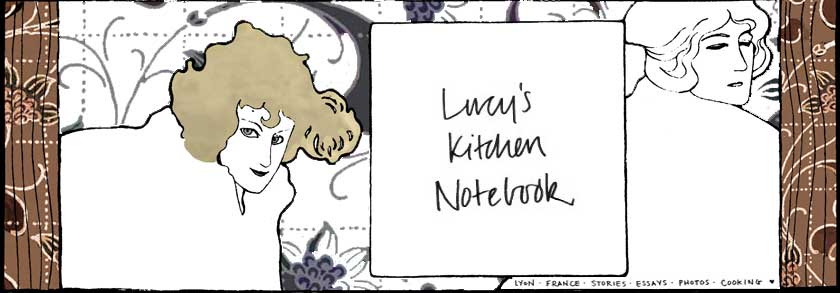









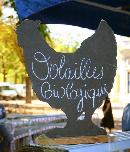
















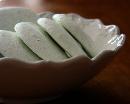








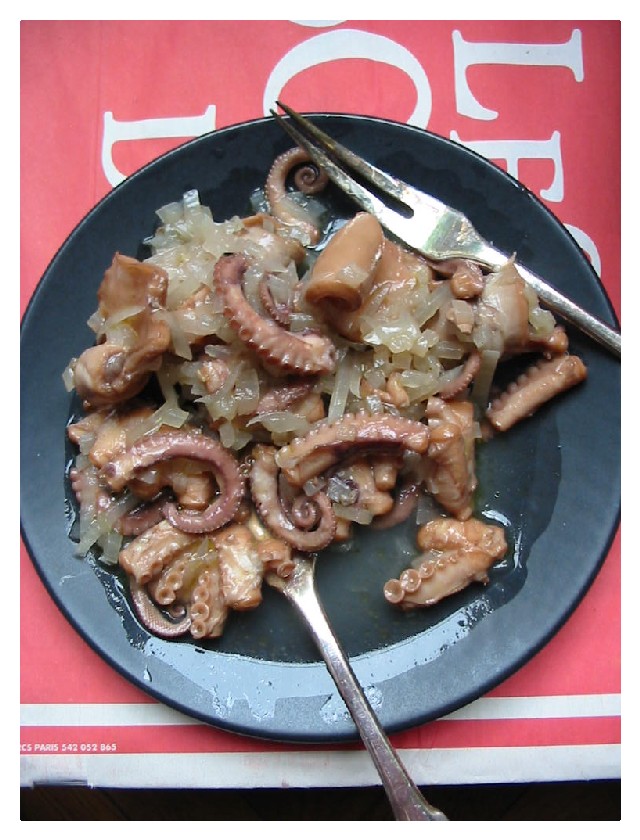


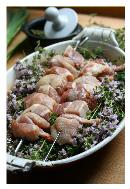













16 Comments:
Did you get all of this information by talking to your fromager? I love this sort of information; the kind that explains how the best foods come from a strong knowledge of the land. As an American who has grown up in a culture whose main food sources have absolutely no connection to the land, it is totally fascinating to read about all those who are still in touch with this kind of nourishing wisdom.
To eat something of such cultural value rescued from extinction by the quick thinking of only one or two people is amazing. Great post, thank you.
I had my 13th birthday in Vezelay and I remember we went to Epoisses the next day. The overwhelming memory I have is of absolutely the stinkiest cheese in France! Of course this just added to my and my brother's enjoyment of it :-)
Dear June, this information mainly came from the association to protect the cheese. My fromager has been trained by hands on experience about how to treat the cheeses but is not necessarily well versed in their histories. In my education process, I realized that for the major cheeses there is usually an association that has a list of documents you can refer to. They exist for people like me who are so passionate about the cheese I want to find out everything there is to know about it!
Zoe - I'm happy to have brought back memories of the cheese and your experience with it!
What a wonderful and solid description of a world class cheese. And thanks for adding the word 'cakes' to my cheese vocabulary. It's perfect!
In my humble opinion, it is the best cheese in France (therefore, the world). I could easily and very, very happily eat that for my entire Thanksgiving dinner, with only a bit of walnut bread and a bottle of red wine to round it out...In fact, I think I may do just that!
I love your blog. Thanks for this wonderful story of Èpoisses. I'm off to my local cheese shop!
Oh to be able to get just a few of your cheeses here in the States! When I was lucky to travel in France, the cheeses were second on my list of favorite foods, of course the wines were number one. Thank you for this informative and lovely post regarding Epoisses. Yum!
I want to go on a cheese pilgrimage!
I'm seriously drooling looking at that... definitely asking for it next time I go to the cheese shop.
Dear Katie, janie, Winedeb, and emiglia, enjoy! Now is the time!
Winedeb, you can get many cheeses on line! When we lived in Los Angeles, we had good results from fromages.com.
Thanks Lucy for the website address! I am going to check it out today:)
What a beautiful blog you have! This is my first time here.
The gooey goodness of that cheese is creating a Pavlovian response in me.
Just discovered your blog from a link Deb's Key West Wine & Garden. Congratulations, it is truly beautiful! My husband and I spent a few days in Burgundy in 2006 and fell in love with Epoisses. I even bought some to try and bring back with me but ended up giving it to the doorman where we were staying because the smell was so strong... Luckily, there are now some specialty shops in Miami that carry it. Your post brought this memorable trip back to me.
This is the most beautiful picture of cheese I have ever seen~ the cheese is perfect! I thoroughly enjoyed the information you shared and learned so much tonight! Thank you ~
that oozy piece of cheese is calling my name!
I came across description of this cheese for the first time in a novel I'm currently reading.
It sounds fabulous. I'm wondering how best to serve it. I read it is well paired witha good burgandy wine but the cheese itself... ( which I am embarrassed to say I'm not 100% certain of it's pronunciation)
Is it best on a certain type of cracker or bread?
If you could let me knnow I'd be most grateful.
I have also truely enjoyed visiting your webpage.
Well done .
Stacie
Dear Stacie,
It's nothing new to recommend a good white Burgundy to go with this cheese. When we arrived in Lyon in 2000 that's what the fromager was recommending and they still do now.
Its really good with any kind of bread. We especially like it with a pain de campagne, a crusty country type of bread.
Post a Comment
<< Home